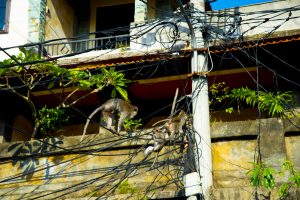There are many policy tools governments can use to encourage the adoption of renewable energies. One is a carbon tax, which tries to set a ceiling on emissions by taxing them. You also have cap and trade schemes, where emissions are capped through regulatory limits and the market can decide the price for an exemption. Lately, there’s been a move toward sustainable investment, with green bonds and ESG ratings intended to influence investor behavior. We can debate how effective these tools are, but what they have in common is the assumption that well-regulated and competitive markets can be leveraged in some form or fashion to reduce emissions.
In many countries, however, markets don’t function very well. Regulatory oversight is weak, governance is poor and uncertainty is high. In such situations, private companies may be reluctant to invest in renewable energy projects because the market is too volatile and they don’t feel like the investment is safe. One of the more popular fixes in recent times has been a policy tool called a feed-in-tariff, which is when a utility enters into a long-term contract with a renewable energy developer and agrees to purchase power from them at a fixed and often above-market price.
These contracts typically run for 20 to 30 years, so the idea is that reluctant developers can be induced to invest in solar and wind power when they otherwise might not because the feed-in-tariff provides certainty and guarantees a healthy return over many years. Feed-in-tariffs are often backed by government guarantees and, if not negotiated carefully, can be settled in U.S. dollars, which exposes the utilities entering into these deals to big foreign exchange liabilities should the local currency experience any volatility.
The trade-off here is that the state essentially shoulders a lot of the investor risk, and in exchange they get investment that they might not otherwise get in renewable energies like solar, wind and biomass gasification. Feed-in-tariffs, when designed and implemented well, have been shown to work. In this paper, I showed that while it is clear that the Philippines was able to induce significant investment in solar and wind power using feed-in-tariffs, Indonesia, using the same policy tool, had almost no success.
When I wrote the paper several years ago, I was pretty critical of Indonesia’s efforts. The country’s policy framework changed constantly, and involved local content requirements that led to drawn-out court battles. Moreover, feed-in-tariffs often involve higher operating costs for the utility and the Indonesian government really dislikes passing such costs through to customers, which makes the entire model somewhat unviable (this is related to why water privatization had more staying power in Manila than Jakarta). So even when Indonesia’s state-owned utility PLN offered a very high feed-in-tariff for solar power, there were no takers.
Ironically, it turns out this might have been a blessing in disguise. With feed-in-tariffs, the state is basically guaranteeing it will offtake power at a set price for 20 or 30 years. But the cost of solar has dropped so much in recent years that utilities which entered into feed-in-tariff agreements at prices that made since in 2015 are now locked into overpaying for solar power for the next three decades. By bungling the implementation of feed-in-tariffs several years ago, PLN has more or less avoided such a fate and saved itself some money.
But from a bigger picture perspective, this also calls into question the logic of feed-in-tariffs in general. Is it really a good idea to structure these contracts so that risk which should belong to private investors is being shifted onto states, a phenomenon Professor Daniela Gabor has termed the “de-risking state.” Sure, sometimes the state needs to offer private capital some reassurances otherwise there may be no investment at all. The question is where to draw the line. That’s not an easy question to answer but at least in Indonesia PLN kind of accidentally found the right balance, even if it did so by stumbling around in the dark.

































